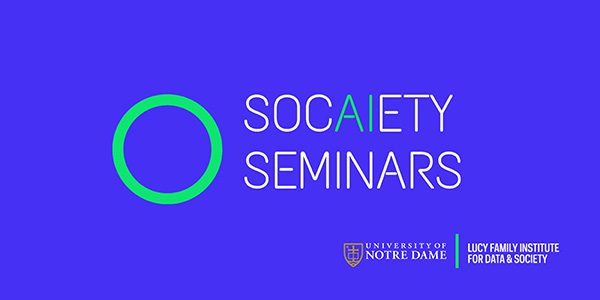The Church in Asia: The Relationship Between Christianity and Buddhism in China
Subscribe to the ThinkND podcast on Apple, Spotify, or Google.
Featured Speakers:
- Gabriel Said Reynolds, Crowley Professor of Islamic Studies and Theology and the Director of the World Religions and World Church Program in the Department of Theology, University of Notre Dame
- Xueying Wang, Lecturer in the Department of Theology, Loyola University Chicago
- Dr. Robert Gimello, Ph.D., Research Professor Emeritus in the Department of Theology, University of Notre Dame
The second virtual event of the Church in Asia series focused on the relationship between Buddhism and Christianity in China. To begin the discussion, Xueying Wang asked Dr. Robert Gimello for a brief overview of Buddhism. Gimello explained that Buddhism is one of the world’s major religions, which began three centuries prior to Christ in India. Buddhism spread throughout Asia into China by the beginning of the common era. He added that Buddhism is a remarkable example of spreading cultures because it was done without force or missionary work. Eventually, China became a very Buddhist culture, which it remains today. Gimello explained deeper the teachings of Buddhism, notably the Four Noble Truths — the truth of suffering, the truth of the cause of suffering, the truth of the end of suffering, and the truth of the path that can lead to the end of suffering.
The discussion shifted from the teachings of Buddhism to the reasoning behind its success in China. Gimello asserted that it “expanded the cosmos” for the Chinese. This felt liberating and made the world seem more vast and limitless. Wang asked if much dialogue between Christians and Buddhists occurred in China. Gimello said yes, however, most dialogue happens outside of Chinese Buddhism.
One of the important figures related to Christian dialogue in China was John C. H. Wu. Wu grew up in China and later went to law school in the United States where he converted to Catholicism. Upon graduating, he returned to China and served in several leadership roles, including as the Chinese ambassador to the Vatican. One of his most influential works was translating the New Testament to Chinese. Because Wu was native to Chinese culture, his translation allowed for biblical terms to be conveyed most accurately.The formal discussion of this event shifted to a question and answer session with viewers, exploring percentages of Chinese who are Buddhist and Christian and the ideas of zen Buddhism. Gimello concluded by providing further readings about what was discussed in the event, including John C. H. Wu’s autobiography, Beyond East and West.
- Buddhism is one of the world’s four major religions, (4:40).
- Transmission of Buddhism to Asia is a remarkable example of spreading cultures. It never spread by force or was centrally directed by missionary activity, (5:28).
- Buddhism took deep roots in China without enculturation, (7:19).
- Buddhism continues today as a major ingredient in Chinese culture, (8:06).
- Most of the dialogue happening between Buddhism and Christianity is happening outside of China, for example, in Tibet, Sri Lanka, and Japan, (20:37).
- John C. H. Wu’s translations took advantage of indigenous Chinese traditions and interpreted biblical terms in ways that could be best understood in Chinese, (39:09).
- “Over the course of a few centuries [Buddhism] inserted itself in a variety of ways into Chinese culture, civilization, politics, and society. The transmission of Buddhism to east Asia, especially to China, is a remarkable example of transmission of religions across cultures. It’s quite unlike the way other religions were transmitted outside the realms of their origins to other alien cultures. It was never spread to east Asia by force.” — Robert Gimello, 5:18
- “China became a Buddhist culture. This is especially remarkable because the civilization in which Buddhism arose, that of ancient India, and the civilization to which Buddhism was transmitted in China are as unlike one another as is possible for two cultures or civilizations to be.” — Robert Gimello, 6:36
- “The process of [Buddhism] taking root in Chinese culture was all the more remarkable because it was done without any fundamental alteration in the character of the Buddhist religion.” — Robert Gimello, 7:10
- “By the fifth or sixth century, [Buddhism] was a major force in the intellectual life of the Chinese elite.” — Robert Gimello, 8:01
- “There certainly can be meaningful dialogue, and there has been meaningful dialogue between Buddhism and Christianity. Most of that dialogue has not occurred within the Chinese context.” — Robert Gimello, 20:37
- “In [John C. H. Wu’s] translations of the New Testament and the psalms, he took full advantage of his knowledge of the indigenous Chinese traditions and found ways of interpreting biblical terms in ways in which they could be understood by well-educated Chinese.” — Robert Gimello, 38:50
Related Content
Reunion 2024
Alumni Education Programming Click each program title to learn more. ND Perspectives: Election 2024 and the Future of Democracy in the U.S. The 2024 presidential election looms...
Read ArticleA Brave New World of AI Governance
Explore the connection between data, geopolitics and governance, regulation, self-regulation while discovering examples of good and bad practices in various sectors, such as...
View EventAlgorethics: potentiality and challenges in the age of AI
Explore the possibilities and challenges in ethical governance of AI through algorethics. Algorethics is a term that has been developed since 2018 to denote the need for a study...
View Event

